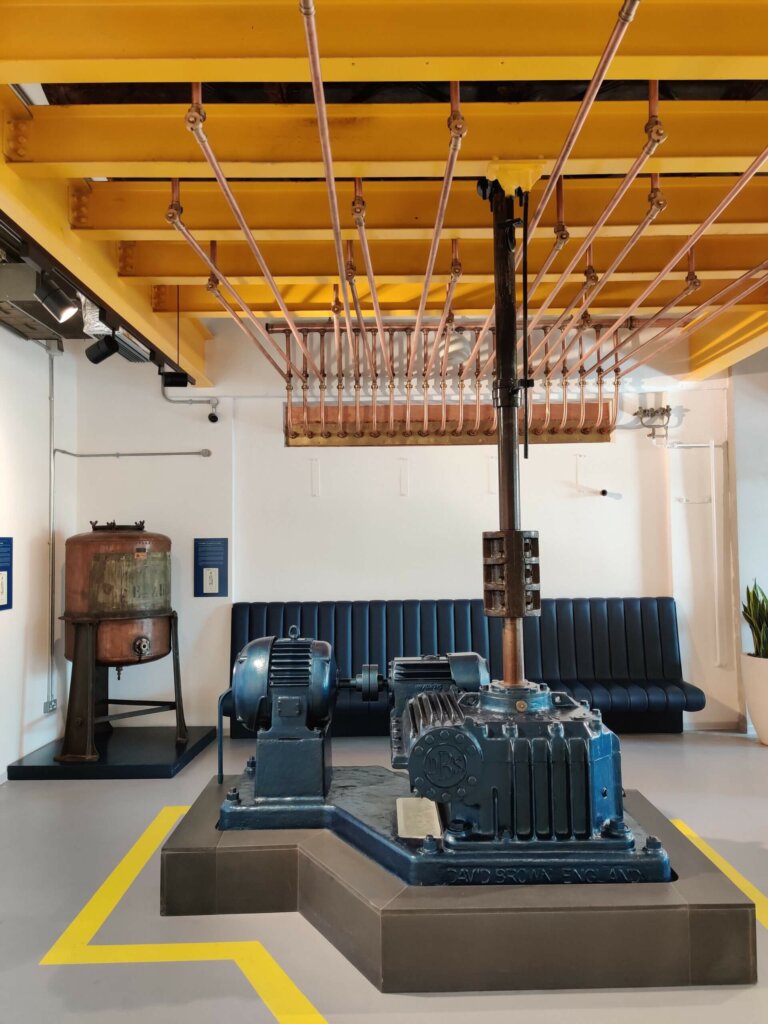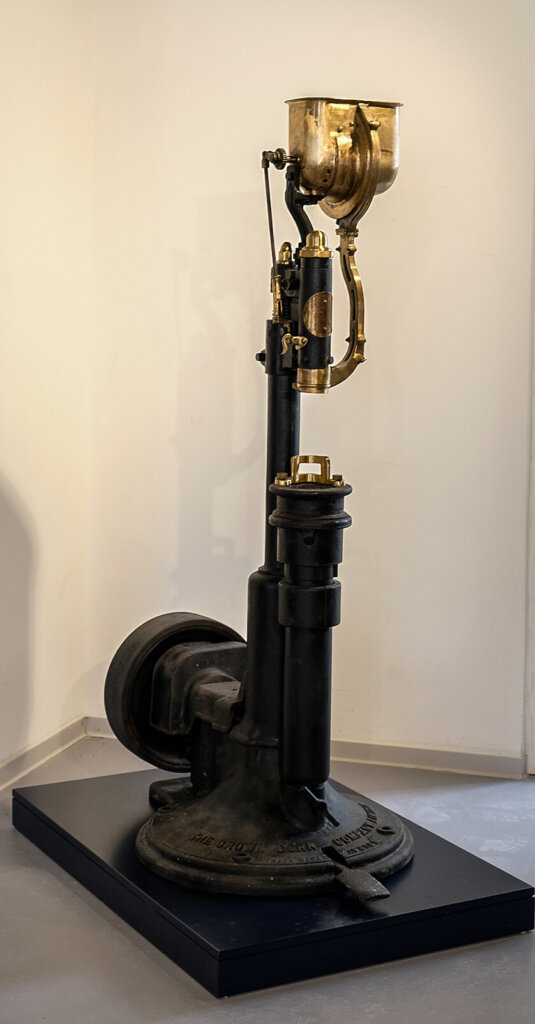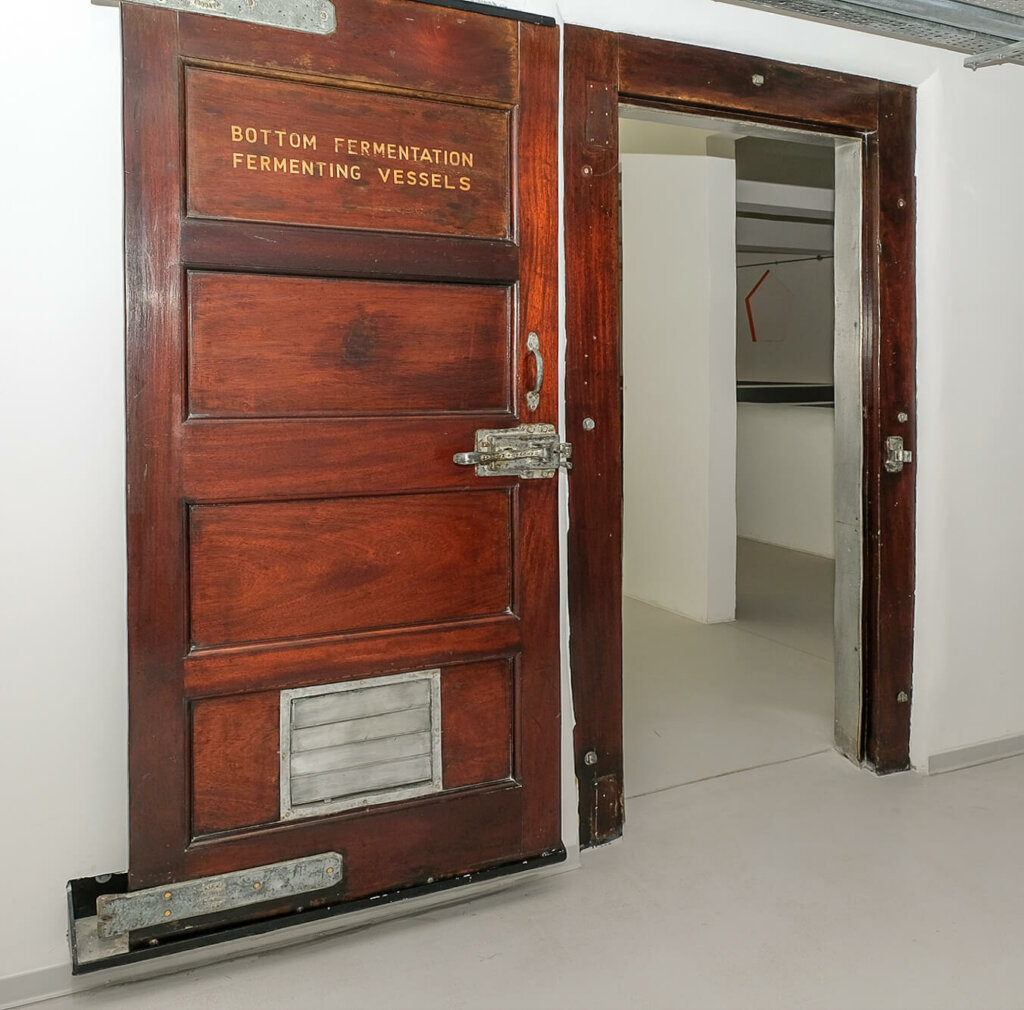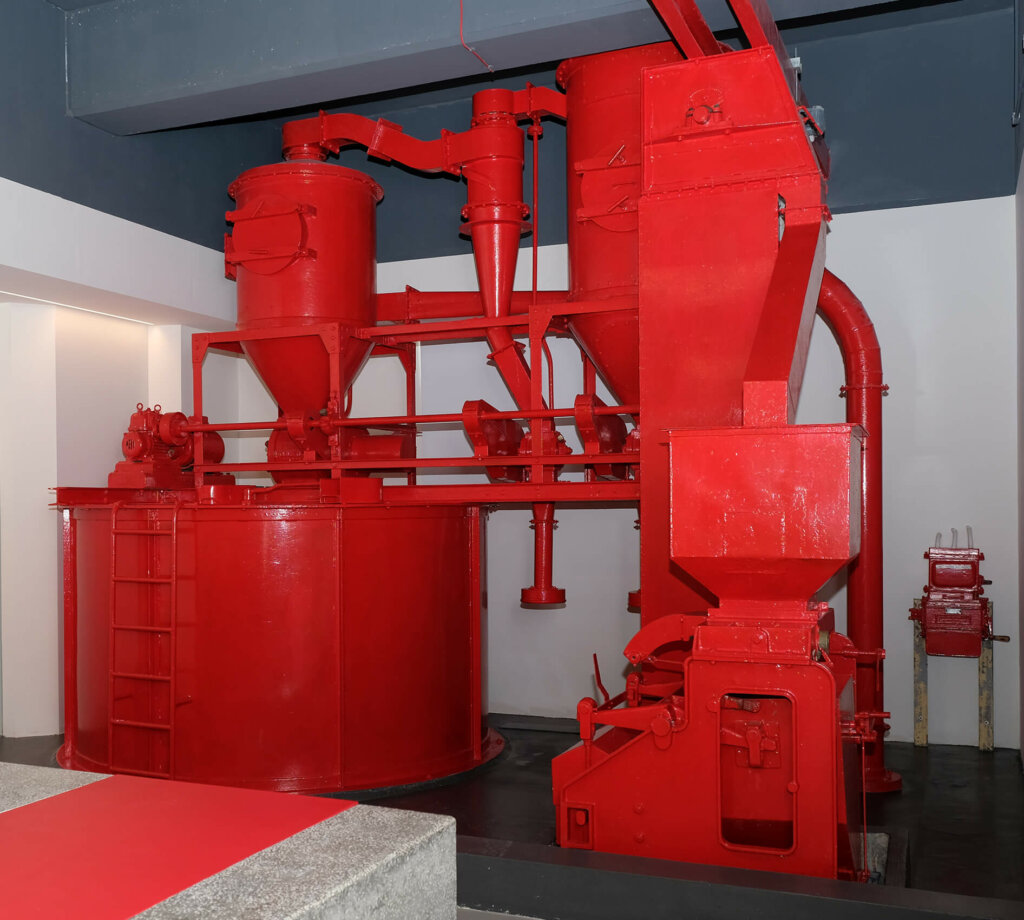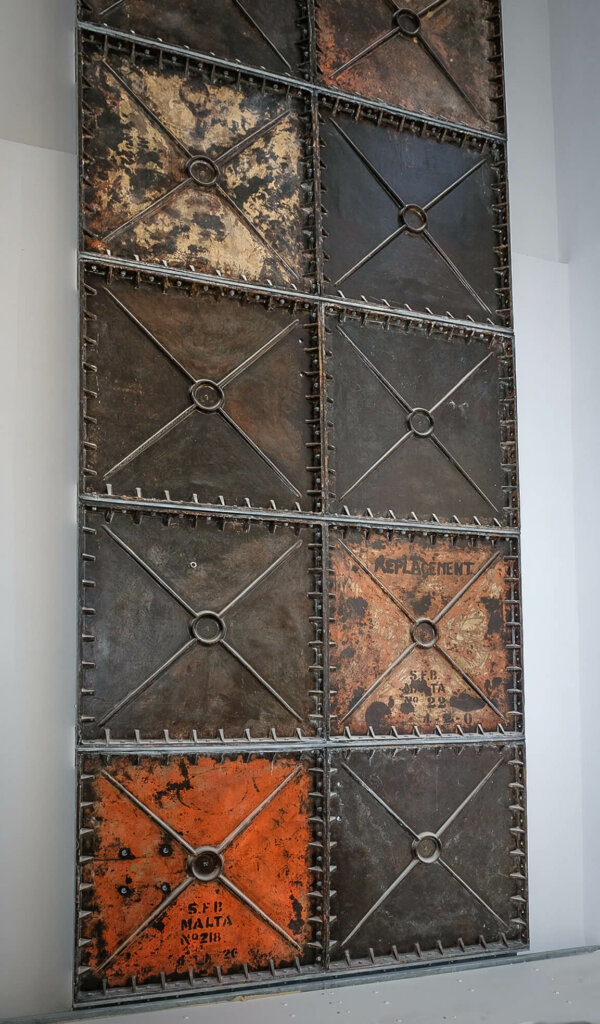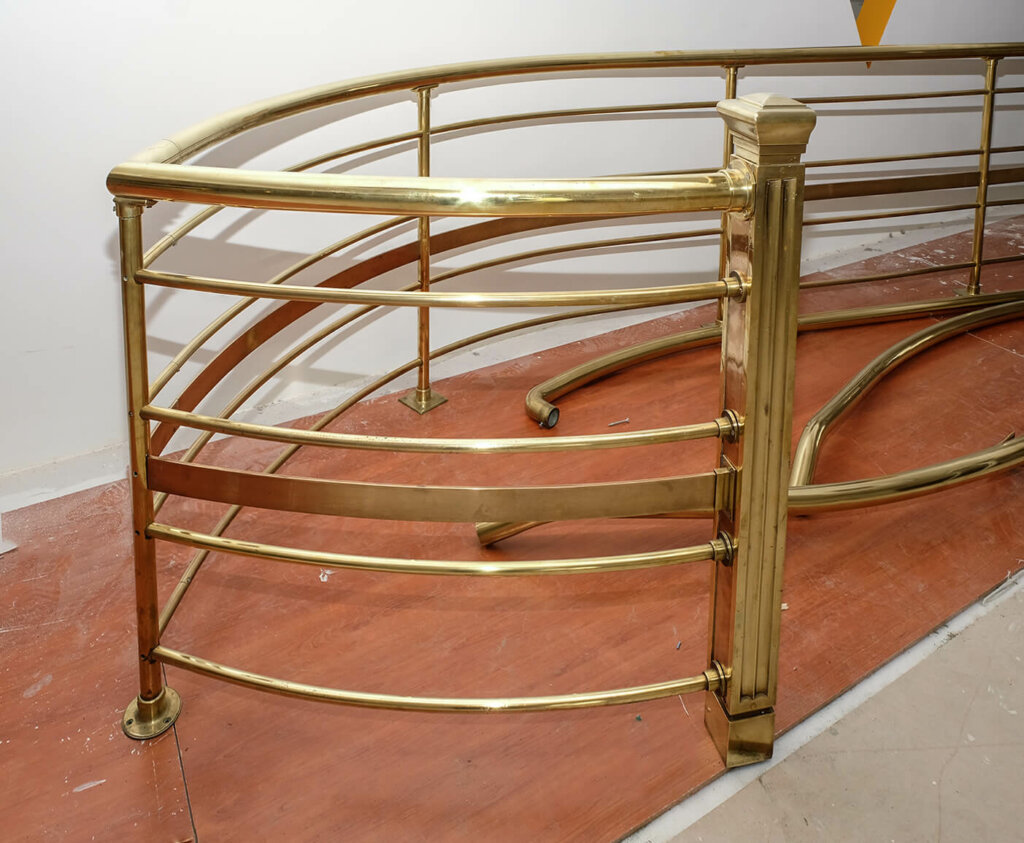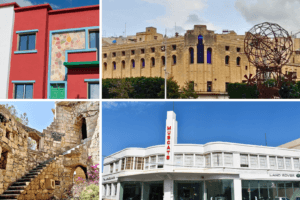
REVIVING INDUSTRIAL HERITAGE: The Superintendence Monitors Restoration of Prominent Brewhouse in Mrieħel
The Superintendence of Cultural Heritage has recently taken a leading role in the restoration of a prominent Brewhouse situated in the industrial area of Mrieħel.
Given the high cultural heritage value of the building in question and its original machinery, the Superintendence played a pivotal role in the project right from the consultation stage, advocating for the preservation and in-situ restoration of the original machineries. Subsequently, following the issuance of the permit, the Superintendence’s Built Heritage Restoration Inspectorate monitored the ongoing works to ensure compliance with the preservation recommendations.
Inaugurated in June 1950, the complex stands as a significant milestone of Art Deco industrial architecture in the Maltese Islands, earning partial Grade 2 scheduling for its iconic value. This scheduling encompasses approximately half of the historic Brewhouse. Concurrently, the remaining sections of the old Brewhouse, alongside the distinctive modernist loggia, main entrance, and Boardroom, have undergone redevelopment that aligns with the design and massing of the Grade 2 scheduled structure.



In light of the complex’s repurposing of various spaces, a critical aspect of the Superintendence’s involvement was the safeguarding and restoration of the original machineries. Remarkably, these machineries were retained in their original positions and integrated into the new design. Noteworthy preservation efforts extended to the iconic copper kettles, a significant hallmark of Malta’s industrial heritage, which are distributed across four levels of the building.
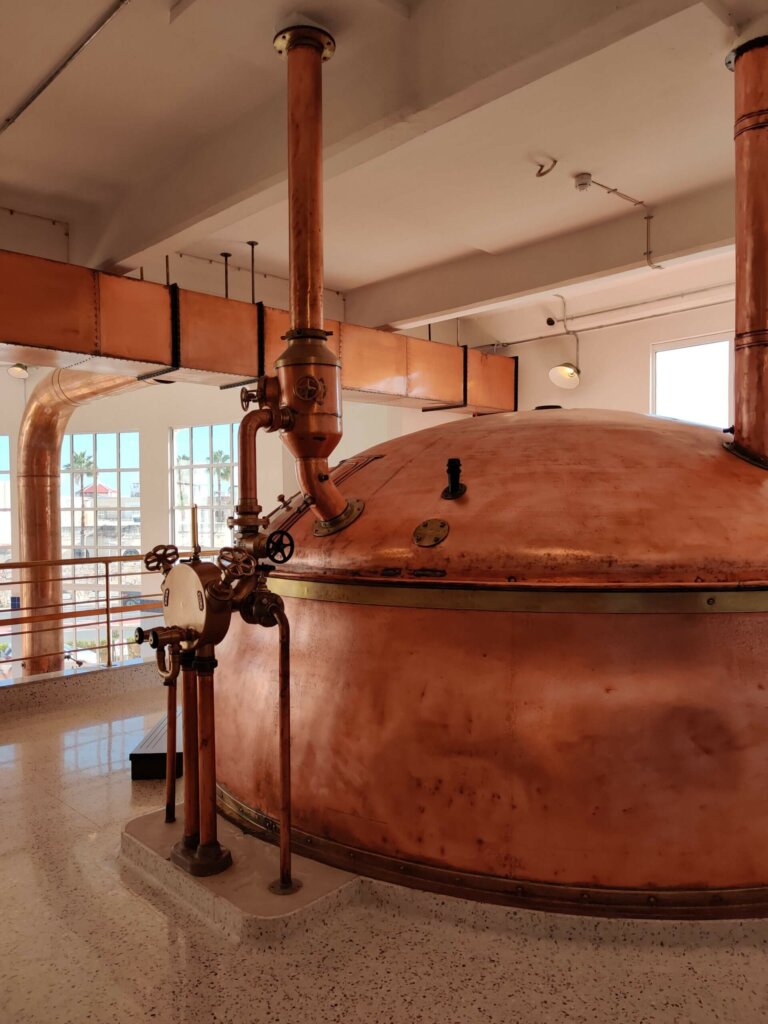
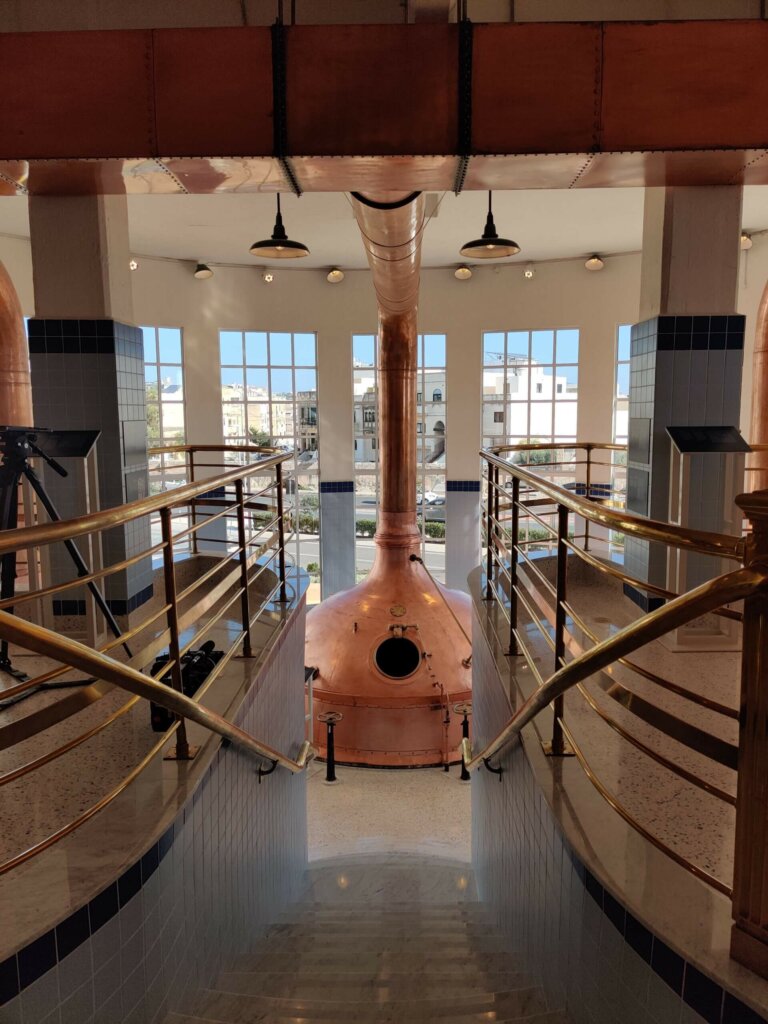
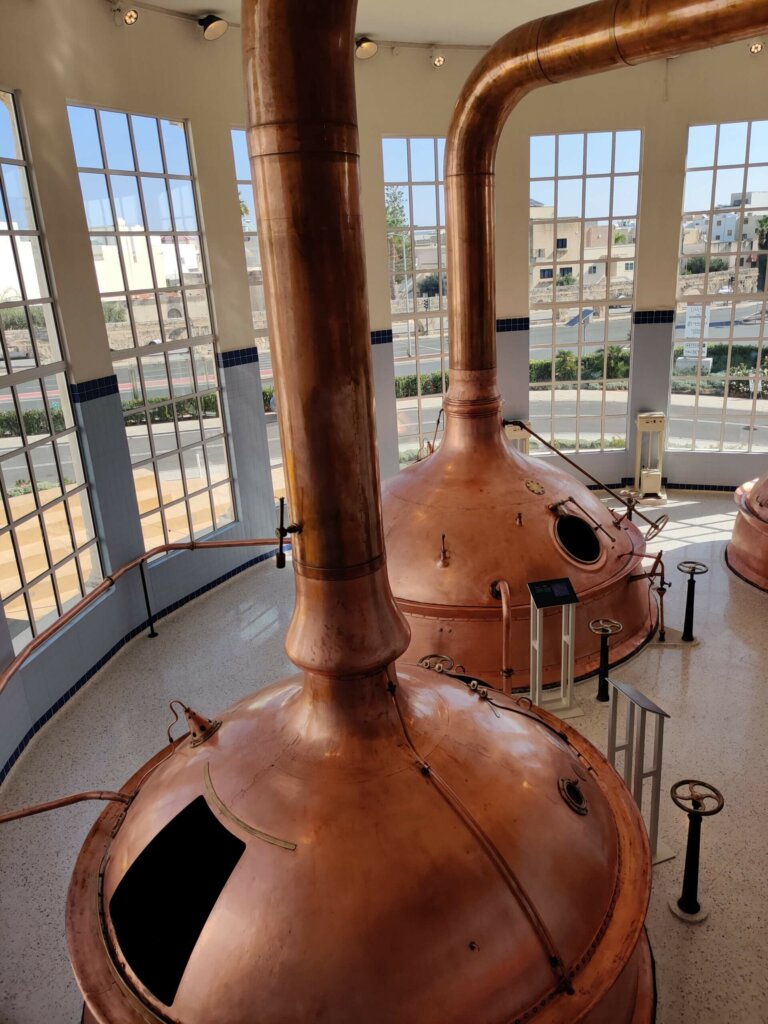
Under the careful oversight of the Superintendence, restoration efforts extended to the exterior of the complex, aiming to reinstate the former modernist aspect of the external facade through the application of various shades of white velatura and paint. Restoration initiatives also encompassed the external envelope and the Portico of the brewhouse, with meticulous attention to detail. This involved repairing damaged concrete using materials compatible with the existing substrate, preserving the original blue terrazzo floor finish, and reusing vintage timber and metal doors, which are still adorned with their original paint and lettering.
Navigating industrial heritage in contemporary times involves not only preserving structures but reconstructing history through a nuanced examination of the building itself. This process unfolds by delving into diverse written and verbal sources, as well as archives. The remnants of machinery serve as tangible artifacts requiring specialised technical expertise for thorough analysis.
Industrial heritage, encompassing both tangible and intangible evidence, illustrates how industrialisation has intricately shaped society, economy, and culture. The conservation and promotion of industrial heritage have grown into a burgeoning field, with numerous organisations and initiatives dedicated to safeguarding and interpreting industrial sites and artefacts.
Industrial heritage deserves the same level of consideration from society and the Maltese community as any archaeological site or museum. These remnants embody the everyday life of the past, a crucial element that has significantly contributed to shaping our present identity.
In this context, the twentieth-century Maltese brewhouse stands as an exemplary instance of Industrial archaeology, symbolising concerted efforts to preserve and acknowledge the transformative impact of industrialisation on the cultural landscape.
The Superintendence’s role in the restoration of this Brewhouse as part of industrial heritage has been covered in the popoular local television show 𝑴𝒂𝒍𝒕𝒂 𝒖 𝑳𝒊𝒍 𝑯𝒊𝒏𝒏 𝑴𝒊𝒏𝒏𝒉𝒂 as part of its part-sponsorship of the programme.

